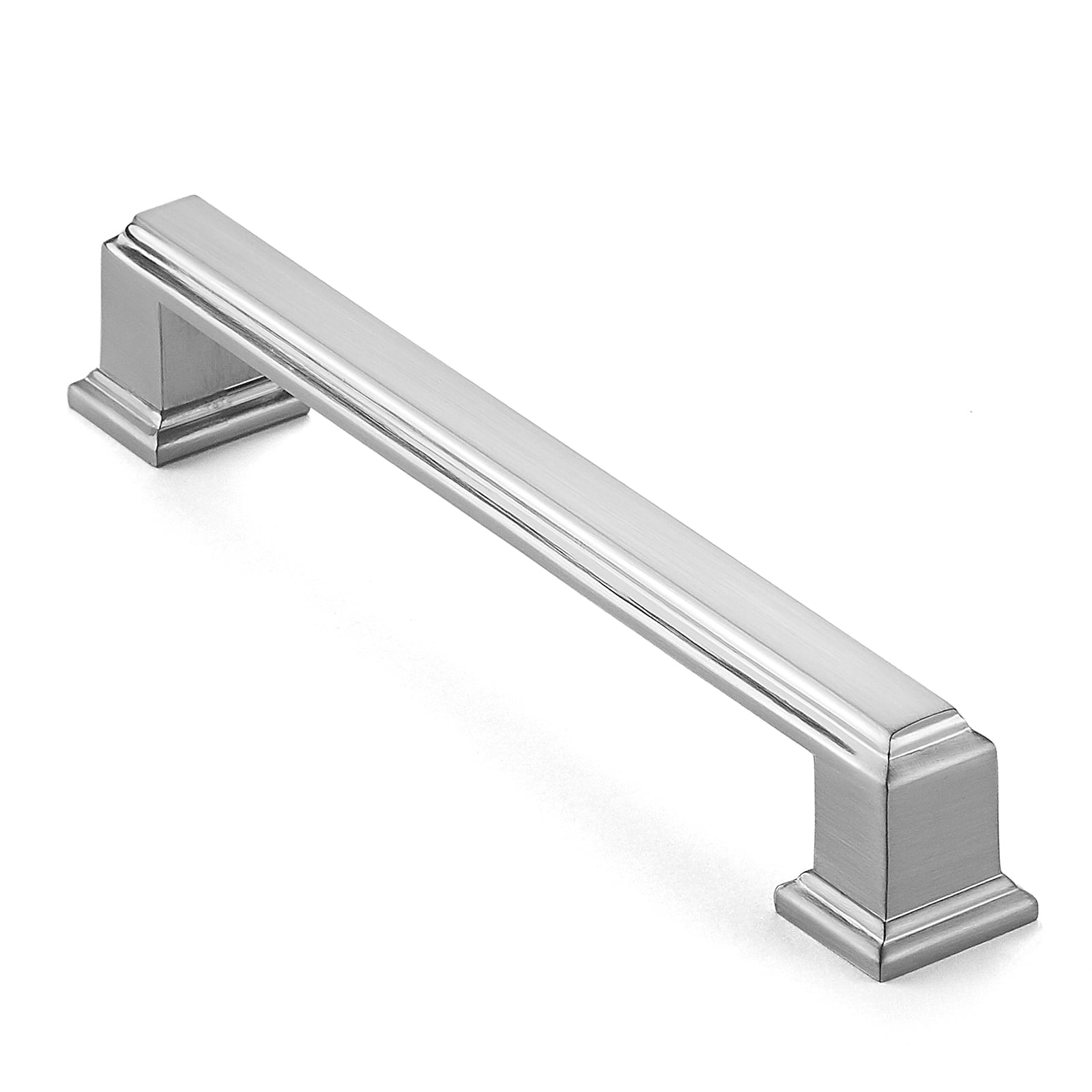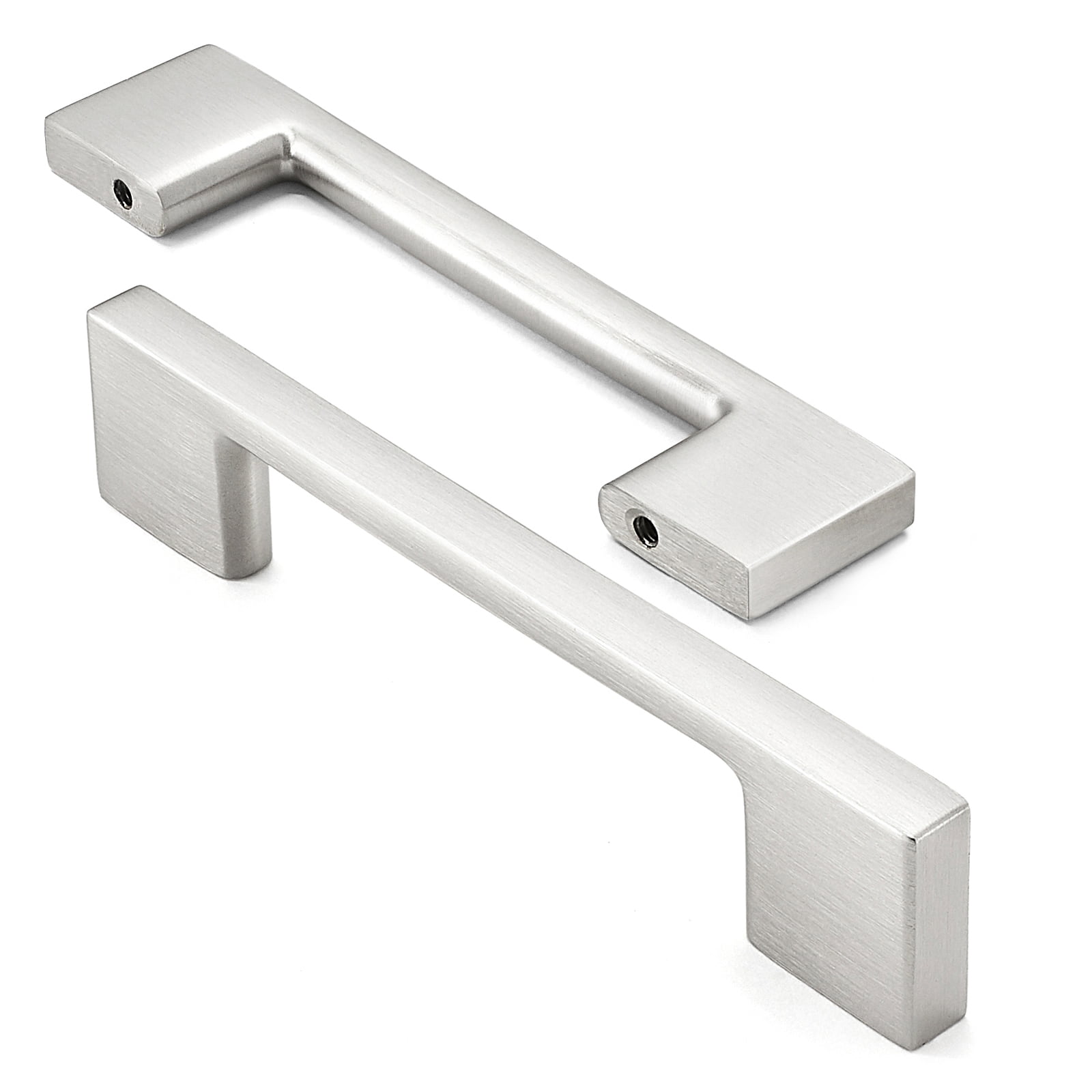Types of 4-Inch Cabinet Handles: 4 Inch Handles For Cabinets

Four-inch cabinet handles are a popular choice for homeowners and designers due to their versatility and functionality. They offer a balance between size and grip, suitable for various cabinet styles and door thicknesses. This guide will explore the different types of 4-inch cabinet handles available, their advantages and disadvantages, and how they impact the aesthetics and functionality of your kitchen or bathroom.
Cup Pulls
Cup pulls are characterized by their recessed, cup-like design. They are typically made of metal, with a variety of finishes and styles available.
- Advantages:
- Ergonomic Design: The cup-like shape provides a comfortable grip, making them easy to open and close cabinets.
- Modern Aesthetics: Cup pulls often have a sleek and minimalist design, adding a contemporary touch to kitchens and bathrooms.
- Durability: Made from sturdy materials like metal, they are built to last and resist wear and tear.
- Disadvantages:
- Limited Space: The recessed design can limit the space available for the cabinet door, potentially affecting functionality.
- Cleaning Challenges: The recessed design can make cleaning around the handle more difficult, especially with intricate designs.
Bar Pulls
Bar pulls are long, rectangular handles that offer a clean and modern aesthetic. They are commonly found in various materials, including metal, wood, and ceramic.
- Advantages:
- Sleek and Minimalist: Bar pulls create a streamlined and contemporary look, enhancing the overall design of your cabinets.
- Easy Grip: The long, flat surface provides a comfortable grip, making them easy to use.
- Versatile: They come in a wide range of materials, finishes, and lengths, allowing you to find the perfect match for your style.
- Disadvantages:
- Potential for Fingerprints: The smooth surface of bar pulls can attract fingerprints, requiring frequent cleaning.
- Limited Functionality: They may not be suitable for cabinets with limited space or those that require a strong grip.
Knobs
Knobs are round, protruding handles that offer a classic and timeless look. They are available in various materials, including metal, ceramic, and wood.
- Advantages:
- Classic and Timeless: Knobs offer a traditional aesthetic that complements various kitchen and bathroom styles.
- Easy Installation: They are typically easier to install than other handle types, making them a popular choice for DIY projects.
- Wide Variety: Knobs come in a wide range of shapes, sizes, and finishes, allowing for a personalized touch.
- Disadvantages:
- Limited Grip: The small size of knobs can make them difficult to grip, especially for people with larger hands.
- Potential for Damage: They can be prone to damage, especially if subjected to heavy use or impact.
Edge Pulls
Edge pulls are thin, rectangular handles that are mounted directly to the edge of the cabinet door. They are often made of metal and come in various finishes.
- Advantages:
- Minimalist Design: They offer a clean and understated aesthetic, blending seamlessly with the cabinet door.
- Space-Saving: The flush design maximizes space, making them ideal for cabinets with limited space.
- Easy to Clean: The smooth surface is easy to wipe clean, maintaining a polished look.
- Disadvantages:
- Limited Grip: The thin design can make them difficult to grip, especially for people with large hands.
- Potential for Damage: They can be prone to damage if subjected to heavy use or impact.
Materials for 4-Inch Cabinet Handles

Cabinet handles come in a wide range of materials, each offering a unique combination of durability, aesthetics, and price. Choosing the right material for your cabinet handles depends on your desired style, budget, and the overall look you want to achieve in your kitchen or bathroom.
Stainless Steel
Stainless steel is a popular choice for cabinet handles due to its durability, resistance to corrosion, and sleek, modern appearance.
- Durability: Stainless steel is known for its strength and resistance to scratches, dents, and rust. It can withstand everyday wear and tear, making it a good choice for high-traffic areas.
- Appearance: Stainless steel offers a clean, polished look that complements modern and contemporary kitchen and bathroom designs. It comes in various finishes, including brushed, satin, and polished, to suit different preferences.
- Price: Stainless steel handles are generally considered mid-range in price, offering a good balance between durability and affordability.
Brass
Brass is a classic material that adds a touch of elegance and sophistication to cabinet handles.
- Durability: Brass is a durable metal that can withstand scratches and dents. It also resists corrosion, making it suitable for humid environments.
- Appearance: Brass has a warm, golden hue that adds a touch of luxury to any space. It can be finished in various ways, including polished, brushed, and antique, to create different looks.
- Price: Brass handles are generally more expensive than stainless steel handles, but they offer a timeless and luxurious appeal.
Nickel
Nickel is a versatile metal that offers a range of finishes and styles for cabinet handles.
- Durability: Nickel is a durable metal that resists corrosion and tarnishing. It is also relatively resistant to scratches and dents.
- Appearance: Nickel offers a cool, silvery tone that complements both modern and traditional designs. It can be finished in various ways, including brushed, satin, and polished, to achieve different looks.
- Price: Nickel handles are generally priced similarly to stainless steel handles, making them a good value option.
Bronze, 4 inch handles for cabinets
Bronze is a durable and aesthetically pleasing material that adds a touch of rustic charm to cabinet handles.
- Durability: Bronze is a strong and durable metal that resists corrosion and tarnishing. It is also resistant to scratches and dents.
- Appearance: Bronze has a rich, warm brown hue that adds a touch of vintage appeal to any space. It can be finished in various ways, including polished, brushed, and antique, to create different looks.
- Price: Bronze handles are generally more expensive than stainless steel or nickel handles, but they offer a unique and elegant look.
Wood
Wood is a natural material that adds warmth and character to cabinet handles.
- Durability: Wood handles can be durable, especially if made from hardwoods like oak or maple. However, they are more susceptible to scratches and dents than metal handles.
- Appearance: Wood handles offer a natural, rustic look that complements traditional and farmhouse styles. They come in a variety of wood types and finishes, allowing for customization.
- Price: Wood handles can range in price depending on the type of wood used and the finish. They are generally more affordable than metal handles.
Installation of 4-Inch Cabinet Handles

Installing 4-inch cabinet handles is a relatively straightforward process that can enhance the appearance and functionality of your cabinets. This guide will provide a step-by-step approach to installing these handles, covering essential aspects like measuring, drilling, and securing.
Tools and Materials
The following tools and materials are commonly used for installing 4-inch cabinet handles:
- Screwdriver or Drill: A screwdriver or drill with appropriate bits is essential for driving screws.
- Measuring Tape: Accurate measurements are crucial for proper handle placement.
- Pencil: Used for marking the handle locations on the cabinet doors or drawers.
- Level: Ensures the handles are installed horizontally and at the same height.
- Pilot Hole Drill Bit: Used to create pilot holes for the screws, preventing wood splitting.
- Cabinet Handles: The chosen handles, of course!
- Screws: Matching screws for the chosen handles.
Measuring and Marking
- Determine Handle Placement: Decide on the desired height and spacing for your handles. Consider factors like the size of your cabinet doors or drawers, the overall design aesthetic, and ease of use.
- Measure and Mark: Use a measuring tape to mark the center points for each handle on the cabinet doors or drawers. Ensure the markings are level and consistent.
Drilling Pilot Holes
- Select the Correct Bit: Use a pilot hole drill bit that is slightly smaller than the diameter of the screws provided with your handles.
- Drill Pilot Holes: Drill pilot holes at the marked locations. This step is essential to prevent wood splitting when driving screws.
Securing the Handles
- Align the Handle: Align the handle with the marked center point and hold it firmly in place.
- Drive the Screws: Drive the screws through the handle and into the pilot holes. Avoid overtightening the screws, as this could damage the handle or the cabinet door/drawer.
Types of Cabinet Handles and Installation Variations
The installation process can vary slightly depending on the type of handle you’ve chosen. Here’s a breakdown of common handle types and their installation considerations:
- Bar Handles: These handles typically have two mounting holes. They are installed by drilling pilot holes and securing the handle with screws through the holes.
- Cup Handles: These handles often have a single mounting hole. They are typically installed with a screw that goes through the center of the handle and into the cabinet door/drawer.
- Pull Handles: These handles may have multiple mounting holes or a single mounting hole. They are installed using screws to secure the handle to the cabinet door/drawer.
Tips for Successful Installation
- Use a Level: Ensure the handles are installed horizontally and at the same height. A level will help you achieve a professional-looking finish.
- Pre-drill Pilot Holes: Always pre-drill pilot holes to prevent wood splitting. This is especially important for hardwood cabinet doors or drawers.
- Avoid Overtightening: Overtightening screws can damage the handle or the cabinet door/drawer. Tighten the screws securely, but do not force them.
4 inch handles for cabinets – Right, so you’re thinking about 4 inch handles for your kitchen cabinets, eh? A bit of a statement piece, that’s for sure. Makes you think of those fancy kitchens you see in glossy magazines, the ones with the sleek, minimalist designs.
If you’re after a bit of that high-end vibe, you could do worse than checking out the Radisson Fiji 2 bedroom suite , they’ve got some seriously swanky kitchens in there. But back to those handles, you’ll want to make sure they’re sturdy, as those cabinets will be getting a fair bit of use, innit?
Four inch handles are a classic choice for kitchen cabinets, offering a balance between practicality and aesthetic appeal. If you’re after a truly timeless look, consider pairing them with antique walnut kitchen cabinets. The rich, warm tones of walnut wood will complement the understated elegance of four inch handles, creating a sophisticated and welcoming kitchen space.
